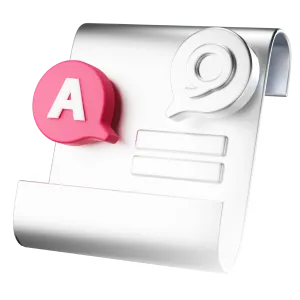It typically costs $130 to $400 to replace your ignition switch. This is a fix best performed by a professional mechanic.
How much does it cost to get an ignition switch replaced?
On average, it costs $130 to $400 to have a mechanic replace an ignition switch. The repair is fairly simple, but the part itself can be a few hundred dollars. Your repair cost will vary depending on the vehicle you drive and where the repair is performed.
Sometimes the lock cylinder will also need to be replaced. In this case, your costs will likely be on the higher end of the repair range. If your key needs to be replaced or recoded, this will add another $100 to your bill.
How many hours does it take to replace an ignition switch?
If the auto shop has a replacement ignition switch in stock, this repair can usually be completed same-day. However, the extent of the problem can vary, so plan to drop off your vehicle.
If the lock cylinder is still working, the ignition switch replacement will be relatively easy. The technician will remove the cover of the steering column, remove the old ignition switch from the lock cylinder and insert the new one.
If the lock cylinder won’t turn, the whole lock cylinder will need to be replaced, which is a more expensive and time-consuming process.
Does a new ignition switch require a new key?
You normally don’t need a new key when you replace your ignition switch. You may need one if you also have to replace the lock cylinder.
How do I know if my ignition switch is bad?
While most of the symptoms of a bad ignition switch will present while you’re turning on your vehicle, you might also experience problems when you’re driving or turning off your vehicle. Here are the symptoms of a bad ignition switch:
- Your vehicle won’t start.
- It’s difficult to turn the key.
- The electrical components in your vehicle don’t turn on when you turn the key.
- The lights on the dashboard flicker while you’re driving.
- Your vehicle stalls while you’re driving.
- The engine won’t turn off.
If you notice any of these issues, take your vehicle to a trusted repair shop. The technician will then diagnose the problem through a series of tests. First, they’ll check any fuses and relays, then they may examine the starter and alternator starting and charging systems. If these are functioning properly, the technician will use a voltage meter to check whether the switch is getting power at different positions.
Can I drive my car with a faulty ignition switch?
While you may still be able to start your car with a bad ignition switch, it’s not a good idea to continue driving. Problems with the ignition switch can cause your engine to shut down while the car is moving, which could lead to an accident. This is a problem you should fix as soon as possible.
Can I replace the ignition switch myself?
You may be able to replace the ignition switch yourself if you’re comfortable working with your vehicle’s electrical system, but this is a repair that’s generally better left to professionals.
The ignition switch in modern vehicles often contains security features that make it difficult to access or replace, and there may be multiple covers and panels that need to be removed. You may also accidentally deploy your airbags if they’re located near the switch.
If you do decide to replace your vehicle’s ignition switch at home, it’s important to take the proper safety precautions:
- Disconnect the battery before you start.
- Wear safety glasses and gloves.
- Work in a well-ventilated area.
The bottom line
Problems with your ignition switch can lead to your car shutting down while you’re driving, or your vehicle could fail to start, leaving you stranded. While drivers with experience working on their vehicles may feel comfortable disassembling their steering system to replace the ignition switch, complicated security and electrical systems mean it’s probably worth taking your vehicle to a mechanic.

Expert insurance writer and editor Amy Bobinger specializes in car repair, car maintenance, and car insurance. Amy is passionate about creating content that helps consumers navigate challenges related to car ownership and achieve financial success in areas relating to cars. Amy has over 10 years of writing and editing experience. After several years as a freelance writer, Amy spent four years as an editing fellow at WikiHow, where she co-authored over 600 articles on topics including car maintenance and home ownership. Since joining Jerry’s editorial team in 2022, Amy has edited over 2,500 articles on car insurance, state driving laws, and car repair and maintenance.

Kevin Berry is the Senior Director of Content at Jerry and has been working in the digital content space since 2011 across the car insurance/repair, personal finance, travel and sports industries. Prior to Jerry, Kevin was a content team lead at NerdWallet overseeing the Multimedia Production and Travel Rewards teams. Previously, he worked for NBC Sports, Comcast Cable and Nike. He has a Master`s Degree from Arkansas State and a Bachelor`s from Oregon State University.
*The price information provided on our car repair webpages is intended for general informational purposes only. Actual prices for car repair services may vary based on various factors, including but not limited to the make and model of your vehicle, the extent of repair required, and the prevailing market conditions. All prices for real repair shops are estimations based on our research only. Therefore, the prices listed on our webpages should not be considered as final quotes or binding offers.







